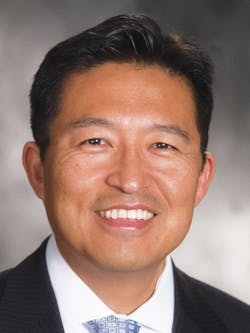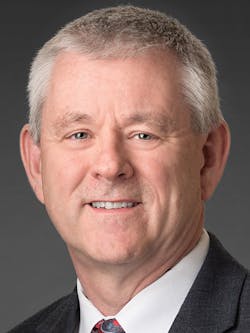Shattering myths about clinical integration
Searching for quick results – in theory at least – a less experienced Supply Chain professional’s perspective about clinical integration easily slips into the tactic of “showing docs the data because they’re scientists” as if this is some mathematical equation on persuasive prowess.
Entrenched Supply Chain veterans, however, know that clinical integration instead calls for developing deep and meaningful business relationships with highly educated men and women who practice medicine and want to ensure their practices remain operational and reliable to care for patients. Certainly data remains a key component of those efforts.
Some contend that clinical integration extends beyond contract compliance, product evaluations and selections, value analysis and other supply chain-oriented functions. And yet it may involve all of these but not be limited to any or all.
From a top-tier Supply Chain perspective, clinical integration encompasses an acknowledgement and understanding of physician, surgeon and nursing needs, a fluid and seamless incorporation of their viewpoints in all discussions and decisions as standard operating procedure and a mutual aim to provide care services to patients.
The question lingers, however, on how deep and far does this philosophy burrow itself within Supply Chain mindsets, and if it remains shallow and near, how fast and long will forward momentum take?
Well, what is it?
Supply Chain seems to vacillate and waver on just what clinical integration means, let alone entails.
“I believe that it depends on who you ask (i.e., clinical leadership, physicians, nurses, supply chain staff, etc.) because you may get very different answers depending on their perspectives,” Marcelletti told Healthcare Purchasing News. “It also depends on the supply chain maturity of the organization – are you embedded in the practice areas managing supplies with sophisticated processes and systems or are you a contracting and procurement organization [that] drops the supplies off at the department with little to no management at the point of use?”
Marcelletti questions physician involvement in an organization and the process.
“Are there physician leaders partnered with Supply Chain Management, Finance, and/or Revenue Cycle?” he asked. “Are business decisions made by committee, and if so, who’s involved? Is Supply Chain involved in decision making recommending/partnering with the clinical practice or does Supply Chain only supply the data and the execution?”
Much hinges on credibility and the effort to achieve it, Marcelletti insists.
“As with any relationship, it takes a lot of work to establish credibility and maintain that credibility with the clinical practice,” he indicated. “Clinical departments will watch and test the supply chain to see if they are truly serious about ‘clinical integration’ before the clinical department will go all in. A clinically integrated supply chain is not just contracting; it involves all functions across the entire end-to-end supply chain process. Clinical integration is not for the faint at heart and it does not happen overnight. Clinical integration will take years as the supply chain must establish credibility and continuously demonstrate they are a trusted partner with the clinical departments over time.”
“Often, [Supply Chain Management] assumes that clinical integration means educating physicians about standardization and reduction of variation,” Chung noted. “However, true clinical integration also means educating SCM professionals about meaningful clinical outcomes and how SCM/operational leaders and clinicians partner to achieve the best patient outcomes. Because SCM professionals don’t have visibility or accountability for patient outcomes outside the hospital, they may not realize the total cost implications for each episode or patient.”
“For well over eight years we have had a physician adviser on our Supply Chain team to help support our initiatives,” Fennessy said. “In my peer group of supply chain executives I never hear about short-changing clinical integration. Usually [I hear] more about how do we find the right individuals from the clinical side who want to support supply chain initiatives.”
In fact, Fennessy fully endorses having a physician adviser integrated into supply chain initiatives. He promotes the physician as a “tremendous asset in terms of helping us understand what could the roadblocks be from the lens of the physician or caregiver,” and “further provides clinical validation on assumptions and communications.”
“Organizations should leverage clinical leadership whenever possible,” he added.
“Health systems around the country are seeking physician leaders to support and improve clinical, operational and financial improvement initiatives,” Cherf told HPN. “However, the industry as a whole still has a long way to go before we can declare that we are ‘there yet’ when it comes to operating as a truly clinically-integrated supply chain.
“I predict we will see much greater clinical involvement in supply chain activities over the next five to 10 years,” he continued. “This will be driven by a heightened degree of integration between providers and pressure to act on value-based care market demands. We should expect to see physicians having a greater role in supply chain activities. This will be driven by new payment models and the need to document value with optimal quality and cost to be competitive in an increasingly transparent marketplace.”
Cherf earned 2019 P.U.R.E. designation by HPN for being a Supply Chain-Focused Physician. [For details, visit https://www.hpnonline.com/21084729/].
“The healthcare supply chain at its core is clinically integrated and to suggest otherwise or attach a term to it feels wrong,” Clinton asserted. “I’m not 100 percent sure where the [point of view] comes from that says the healthcare supply chain is not clinically integrated. I don’t know of a single supply chain that exists in a vacuum. Demand comes from somewhere. It is some sort of integration with this ‘demand’ that produces a supply chain to begin with. The question for me has always been ‘what level of (and type of) integration is necessary to get the right thing to my customers?” Again — a core tenet of any supply chain.”
Clinton recalls a hospital Lean project he helped lead many years ago. “When all was said and done and we had mapped out the process from the procurement of an item to its eventual use, it became clear to everyone involved that the only real value-add step in the process was when the item was used in the provision of care. That, more than anything else, convinced me that clinical integration exists as a fact, not a goal, of the healthcare supply chain.”
The clinical integration practices of Mayo and Northwestern as described by Marcelletti and Fennessy, respectively, and the assertions by THR’s Clinton apparently remain well above the norm, however.
“Value Analysis, while a great step towards clinical integration, is not all encompassing,” Byrne continued. “Healthcare organizations have an immense opportunity to place a strategic emphasis on a clinically integrated supply chain. So much of that simply begins with the belief that ‘we can do better,’ ‘we should do better’ and ‘we can do things differently than we’ve done before.’ Healthcare is evolving, and we need to acknowledge that the supply chain function and the clinical function are better with strategic collaboration and a mutual understanding of how both critical areas have the same goal in mind – to drive quality care.”
“It’s easy for supply chain professionals to short-change the idea of formal clinical integration when they aren’t in a position to challenge organizational precedent and inertia in the effort to reduce non-value added variation in goods and services,” Axter said. “They understand that price reduction on their current mix of supplies and services will only take an organization so far, and the key to unlocking value beyond price is through clinical integration. Thus far, few health systems have truly moved beyond giving Supply Chain a savings target as opposed to setting cost and performance improvement goals at the service-line level where Supply Chain is one of many contributors. Until there is a true push to align the incentives of the physicians with that of the overall organization, they have a right to be skeptical.”
Axter also acknowledges the difficulty of Supply Chain integrating itself within clinical and top-tier administration issues.
“Transforming a supply chain into a trusted partner entity within an organization is a complex and multi-step process that needs an executive-supported strategy,” he noted. “It also requires an organizational investment in creating a physician decision-making body, having credible informatics for physicians that show opportunity beyond price, setting expectations for all involved so they are collectively accountable to drive performance improvement as well as a measurement platform.”
“While clinical integration once called for a primary focus on negotiating the lowest-acquisition cost, today it is imperative that Supply Chain professionals broaden their roles to incorporate the total cost of ownership and outcomes, including elements such as: reimbursements, patient experience, trusting physician partnerships, organizational improvements, outcomes-driven data, key performance indicators, safety, infrastructure to manage risk, patient outcomes, and disposable and capital equipment costs,” Candio Hunt said. “Healthcare providers are recognizing that unless clinical integration is prioritized, mounting market pressures may force them to act differently or close.”
Further, she indicates from her research that recent information points to industry reimbursement cuts that exceed $250 billion during the next decade as inpatient revenues continue to decline.
Lumere’s Cherf believes supply chain professionals see the value in clinical integration, but they often don’t know where to begin to bring about the shift.
“It’s highly likely they have been burned in the past when trying to institute change among physicians, do not have access to or an understanding of data that physicians need to properly engage, lack a physician champion or lack institutional incentives for collaboration,” Cherf listed. “The framework for clinical integration simply has not been developed in many systems. Developing an operational process is one of the biggest stumbling blocks supply chain professionals face and must be cleared before true improvement can be achieved. The most important thing to remember is that physicians care most about improving patient outcomes – demonstrating how this can be improved through a greater degree of collaboration between supply chain and clinicians is key to establishing a healthy partnership.”
Lumere’s Smith concurs, citing “previous failures, lack of executive support, competing priorities, fear of upsetting physicians, and belief that suppliers have the stronger relationships with physicians all contribute to a lack of forward momentum,” as culprits clotting process improvement.
Cutting through clutter
Clinically integrating the supply chain need not be so complicated operationally beyond personality clashes. Some teams – such as Fennessy’s at Northwestern – incorporate physician advisers for active decision making. Other teams – such as Chung’s at Providence St. Joseph – have physicians on staff. Still others rely on their group purchasing organizations (GPOs) that employ physicians and clinicians as consultants or other external, third-party expertise from independent consulting firms and even suppliers that have physicians and clinicians either on staff or on call.
But they shouldn’t be rubber stampers, turf builders or window dressing.
“Adding clinical advisers or leaders on the Supply Chain staff is one solution but it must be done with a definite purpose, and the clinician must be aligned with organizational goals,” Chung urged. “Developing an internal structure that is accountable for total value of care that includes both clinicians and SCM leaders would be more successful.”
Mayo Clinic’s Marcelletti recognizes that incorporating physicians in any of these ways at least advances clinical integration. After all, his organization is physician-led.
“SCM executives should seek to partner with physician leadership to do just that – partner and be seen as a trusted business adviser to the practice,” he noted. “When picking a physician to partner with, it is important to select one that has the time and interest in working with Supply Chain. Mayo Clinic has experienced very positive progress by engaging physicians in a formal leadership role within Supply Chain as well as developing strong physician relationships in the practice areas that we rely on as part of the decision making process along with supply chain professionals. We have also found a big benefit to clinical integration is to move SCM staff out of the back office and reside in the clinical practice. Physical presence goes a long way to build relationships.”
Intalere generally offers four initial recommendations to drive clinical integration in the supply chain, according to Byrne.
First, is to simply establish a shared purpose and common vision with key stakeholders from both functions. “Champion buy-in from all constituents and allow them to witness the strategic emphasis that has been placed on supply chain-clinical collaboration,” she said.
Second, allow clinicians (physicians and nurses) to have a seat at the Supply Chain table. “Clinical subject matter experts, specifically clinicians at the bedside who are still caring for patients, should have a voice in supply chain decision making, especially when decisions impact the delivery of care,” she recommended.
Third, both functions need a solid foundational understanding of the other. “When onboarding new employees, especially clinicians not familiar with the supply chain function, they need to be introduced to the inextricable link between supply chain and clinicians,” she said.
Finally, [facilities] need to acknowledge that novice clinicians who comprise a significant population of the clinical staff may not be familiar with the supply chain function at all. “We need to emphasize a clinically integrated supply chain culture as we onboard and discuss processes on clinical units allowing these impressionable minds to understand that without one another, we cannot provide safe, quality care,” she added.
Vizient’s Axter acknowledges that each organization remains unique in how its clinicians interact with supply chain but the path toward mutual visibility and support can be closely tied. “It’s an effort that requires diligent planning with the long-term objective clearly defined, broadly communicated and supported by senior leadership,” he indicated.
Still, a typical pathway, according to Axter, starts with developing a thoughtful supply chain transformation strategic plan that often includes the following critical elements:
- Internal assessment of supply chain talent, operations, data capabilities and foundational elements to support a paradigm shift
- Crisp alignment with an organization’s overall strategy
- Visibility and support from the executive team
- Scalable data capabilities to provide comprehensive total cost, outcome and economic informatics to support informed decision making
- Consideration for incentive alignment from the clinical enterprise
- Diagnostic clarity on what’s currently in place and how to re-shape, re-structure or re-build entirely
Axter recommends demonstrating to the organization that a sound plan exists as the first step. Next, ensuring credible informatics to fuel the performance improvement conversations beyond price should be second. Finally, it’s imperative that the organization is told and knows that these efforts are designed to achieve “non-value-added variation reduction,” he advised.
“Establishing the right structure, data, process and expertise for your organization is essential, and this is where assistance from clinical integration experts outside of your organization can be helpful,” he said. “They have seen what works and what doesn’t based on a unique environment or culture and can help facilitate and expedite results. They can also help craft the messages, set unbiased goals and targets and drive sustainable performance improvement measures.”
Hospitals needing to reduce costs safely while improving outcomes is quickly becoming standard operating procedure, according to Premier’s Candio Hunt. That’s why clinical integration efforts must extend beyond products.
“Supply chain purchases typically account for 15-30 percent of hospitals’ operating expense,” she noted. “According to market research, more than 10 percent of this spend could be cut through a successful value analysis program focused on improving standardization and utilization management. Premier is seeing clinical integration yield cost-savings and stronger organizational alignment when these multidisciplinary value analysis teams, which include physicians, expand their scope outside of just products and services, focusing on overarching improvement opportunities.”
Playing long-ball with clinical integration
What strategies and tactics can generate long-term vs. short-term improvements within an organization? Eight experts share their tips.
“Developing an internal structure that is accountable for the total value of care will establish long-term goals and accountability that includes not just supply chain but clinical quality, revenue improvement and growth. Clinical integration is a core concept that supports this strategy. A dyad consisting of a value executive and physician adviser/medical director to lead this program is essential.”
Jimmy Chung, Providence St. Joseph Health
“Moving towards digital where process and systems are automated and enables content management through data capture allows an organization to advance through knowledge and information sharing. Since you can’t manage what you can’t measure, a tactical first step may be to focus on low-hanging fruit found in the systems/data and leverage that to gain trust with the practice. If physicians are not engaged with supply chain activity it is important to start fostering relationships with key physicians and being transparent with them. Include physicians in business decisions and educate key physicians on supply chain processes and strategies. As relationships evolve and expand these key physician contacts will become critically important in advancing key initiatives.”
David Marcelletti, Mayo Clinic
“We made a decision over eight years ago to recruit caregivers into Supply Chain in the sourcing and value analysis work streams. Clinicians talking to clinicians. I often talk in terms of how many years of bedside experience we have working in supply chain. It creates a different dynamic in terms of how we approach initiatives, etc. Further, it provides a level playing field in terms of discussion with the decision makers or our customers. When we talk about standardizing a particular class of spend we have our value analysis clinician talking with another clinician. It eliminates one conversation right off of the top: ‘You are not a caregiver and you do not know what you are talking about.’ We still have some of the same challenges that are typical of any standardization initiative, but we advance things faster from my perspective and gain a lot of credibility with the process from the start.”
Gary Fennessy, Northwestern Memorial HealthCare
- “Align products and services that will improve your organization’s key performance indicators such as mortality, length of stay and EBITA.
- Have a defined project management process to enable success with clinical integration. Value analysis committees that follow these steps for all initiatives tend to have the most success: Identification, Gathering Information, Analysis, Implementation, and Monitoring.
- Create a fluid pipeline of project opportunities to identify opportunities to standardize, starting with low-hanging fruit and building toward items that require clinical evaluation such as physician preference items. Leverage your GPO data to create this pipeline and prioritize opportunities by initiative status using categories such as contracts and new technology, building toward standardization to improve continuity of care.
- Set up decision-making meetings with defined roles and responsibilities that help track progress in product evaluation. Key groups include the Executive Steering Council, Enterprise Value Analysis Committees and Value Analysis Sub-Committees. Without a structure and defined roles, providers risk that key product decisions that will not be made in the short- or long-term, resulting in a product or process change that is ultimately not sustained.
- Identify key champions by department and include them in the decision-making process. Empowering them to own the education of their peers is extremely helpful in the adoption of new items.
- Leverage manufacturer relationships and evaluate a manufacturer’s full line of products. Bringing in a suite of products from one manufacturer often results in a better price, which bolsters the organization’s financial health.
- Communicate and collaborate. Constant communication keeps information top-of-mind, while a consistent meeting cadence enables clinical integration success with prompt review of the pipeline. My recommendation is that executives meet at the high-level Executive Steering Council monthly; the supply chain value analysis team meets weekly; and the Enterprise Value Analysis Committee, which includes department champions, supply chain, distributors, GPO and quality, meet biweekly.”
Shannon Candio Hunt, Premier
“For short-term improvements, it’s important to be transparent about what the change is, why it’s necessary and what the expectations are. C-suite leaders must set the tone across the organization and acknowledge that there will be some initial growing pains in order to unlock dramatic improvement over the long-term.
“Everyone must understand that just focusing on pricing within the supply chain is no longer where the big savings can be achieved. To be successful the organization must now focus on standardization, utilization and the elimination of unnecessary clinical variation in care.
“Short term and long term, it’s important to make this about the patient. If everything you do is with the focus on quality and safety and what’s best for the patient, and you truly embrace that as an organization, improvements will come and everyone can be aligned behind the goals of improved patient care.
“It is also important to remember that change-management principles are at play with this process and publicizing ‘quick wins’ is essential, along with recognizing those individuals who are demonstrating the new organizational strategy in action. Doing that will help sustain momentum.”
Erik Axter, Vizient Inc.
“Modification of culture and change management principles reinforce long-term adoption of behaviors. Reinforcing the importance of a relationship between the supply chain and the clinical staff will withstand staff attrition and time. If healthcare organizations embed collaborative processes within care delivery with all reinforcing a culture of teamwork across functions, then behaviors and processes are carried down and exhibited by all members of the organization. In essence, the culture becomes rooted deep within the organization. From a leadership perspective, it begins at the top and trickles down.
“Creating a standard operating procedure or a new policy and educating the team on that policy one time will reinforce a culture of short-term acceptance. Having a nurse or physician serve as an adviser to the supply chain staff, but not allowing them to garner feedback from the bedside or educate their peers on the importance of collaboration will result in less than desirable results. The appearance will be there, but the results will not.”
Daria Byrne, Intalere
“In the short-term, supply chain leaders should develop a system that meets the needs of both supply chain and clinicians. Putting processes in place will provide a foundation to tackling future supply chain challenges. I firmly believe that ‘if you build it, they will come.’ However, the evolution of this system will be an ongoing work in progress.
“For long-term success, it’s imperative to embrace collaboration between supply chain and clinicians. Building a strong foundational partnership will take time. In order to do this, both parties must recognize that each one has something to learn from the other. Physicians are long on clinical expertise but often do not understand the supply chain space whereas supply chain professionals are strong in supply chain knowledge but short on clinical expertise. Both parties need to educate the other to optimize supply chain management. This won’t happen overnight.”
John Cherf, Lumere Inc.
“For long-term success, it is all about building relationships – not just with physicians. It is essential to partner with suppliers, executives and other key clinicians in order to sustain the desired outcomes. Cementing yourself as a trusted resource who understands the importance of being reliable and accountable will go a long way with these partners. The best approach in the short-term is not to change everything at once. Leverage key relationships, develop a plan using a repeatable process and build on success.”
Suzanne Smith, Lumere Inc.
Charting supply chain success with clinical integration
Healthcare organizations that have progressed with clinical integration have generated notable success stories. Eight experts recount their wins.
“We initiated a project to provide high-quality and efficient anesthesia care while reducing the greenhouse effect of anesthesia gas agents. We did this by using cost and usage data that showed significant variation across our system, and reducing the use of desflurane, which is more expensive and worse for the environment without any proven added benefit to the patient. Achieving this integration required both education of physicians on the cost and harmful effects of desflurane and working with [Supply Chain Management] to renegotiate with the vendor to avoid the initial penalty of not meeting contract obligations. Essentially, reducing the use of desflurane was better for the planet but worse for contracting because of the terms under renting the vaporizers and gas purchasing commitments. Bringing the clinicians and SCM to the conversation together helped achieve our goals of doing the right thing and recalculating the true total cost of care.”
Jimmy Chung, Providence St. Joseph Health
“We have proven success in utilizing a clinically integrated approach across several contracting categories. We have physicians participate as subject matter experts during the early contracting stages, which brings in the clinical perspective and expertise. Following contract launches we utilize our physician partners through implementations. Peer-to-peer discussions are very effective when discussing outcomes and removing barriers. Through a clinically integrated approach we have expertise on the business side as well as the clinical/provider side. This model has allowed us to move market share across various categories where in the past these changes have proven to be very difficult. Actively engaging champion physicians and other clinicians into the decision making and implementation processes has expedited the change management required to ensure success across all our campuses. Lastly, having physicians and nurses employed within Supply Chain bridges the clinical/business language gap and ensures key stakeholders’ voices are heard.”
David Marcelletti, Mayo Clinic
“Over the past 18 months we have changed our structure for value analysis in a very rapid manner. We handed decision making to our clinical leadership through seven value analysis committees that act on behalf of the entire system: Cardiac, Vascular, & Thoracic; General Medical Products; Orthopedics; Interventional Labs and Diagnostic Imaging; Surgery and Subspecialties; Neurosurgery and Spine; and Lab.
“Achievements include:
- Program launched in March 2018
- Committees have the autonomy to drive decisions for the Northwestern Memorial System
- Transformed from a regional model to a system model within one year
- 73 percent of committee members are actively practicing physicians or clinicians
- Established] enhanced decision making efficiency through reduction in approving bodies from multiple committees to a single system
- Provide timely feedback within 25 days from request for a new product introduction, resulting in continued physician engagement
- Achieved significant savings that exceeded the budget and funded new product introductions
- Improved supply portfolio standardization to 35 percent from 7 percent.”
Gary Fennessy, Northwestern Memorial HealthCare
“Premier worked with one if its member health systems, a multi-hospital, fully integrated academic center, [which] had more than 500 projects in its pipeline, including commodity items, purchased services, pharmacy and financial services, among others. [The system] reviewed the total cost of ownership for neuromodulation products and services in its value analysis committee and discovered improper coding for this procedure. By utilizing its value analysis committee not only to analyze products, but also reimbursement, the hospital was able to save $1.2 million. By helping the system prioritize opportunity areas, Premier enabled the provider to save $35 million in a year with a strategic focus on non-labor expense reductions.”
Shannon Candio Hunt, Premier
“As a performance improvement partner to our membership, we are routinely involved in working with organizations as a trusted adviser helping to establish the appropriate integration of data, physician/clinical alignment, infrastructure, strategic planning and supply chain’s role in the effort. One example that comes to mind is an academic medical center in the West. Its supply chain leaders understood the financial and market trends as well as insight into the unique and specific objectives of their C-suite. The CFO was looking for savings to meet looming payer-mix changes, the CMO and CNO wanted a meaningful way to engage clinicians in organizational transformation, and the COO was seeking a programmatic and sustainable approach that could evolve over time as the central platform for performance improvement. In this example, the Supply Chain leader was able to build a plan that aligned with the organization’s executives and engaged mid management and front line employees in the organizational performance improvement program. The model incorporated all of the critical elements of talent, data, accountability and clinical integration and started generating results immediately. Success has bred expectations and greater involvement, and the organization continues to leverage and expand the platform going into their third year.”
Erik Axter, Vizient Inc.
“We have consulted for organizations [that] have immense supply chain waste. Missing charges, lost inventory (i.e., things going home with nurses in scrub jacket pockets), and products wasted due to unfamiliarity resulting in potential patient harm, etc. After obtaining an initial understanding of the existing supply chain-clinical collaboration, we made recommendations to improve processes and provide education to close the knowledge gap for clinicians on supply chain, and for supply chain personnel on clinical workflow. Through education and exposure to supply chain principles and clinical workflow, we see a greater appreciation for the complexity of the roles by the other. For the clinician, a greater understanding of the selection, obtainment, purchasing, and logistics of medical supplies necessary to provide the utmost care for patients. For the supply chain, an appreciation of the clinician’s workflow, and the impact, for example, on how one small supply chain can disrupt care delivery. Both functions begin to view the other through a more appreciative lens. As collaboration ensues, compliance increases.”
Daria Byrne, Intalere
“In 2003, I helped found the orthopedic department at a private orthopedic surgery/neurosurgery specialty hospital in Chicago. As a startup, we were very sensitive to cost but also needed to provide physician preference items (PPI) to encourage orthopedic surgeons and neurosurgeons to work at our institute. I frequently worked with administration and purchasing to control supply costs for both outpatient and inpatient neuromuscular care. We ensured over-communication to our clinical staff about our decision-making, and this helped ensure physician buy-in. Much of our success was based on respectful collaboration between strong clinical leaders. In this situation, [an] R.N. director was invaluable in bridging the gap between traditional supply chain and clinicians.”
John Cherf, Lumere Inc.
“In my previous role as a Value Analysis Director, I was responsible for working directly with physician leaders on large PPI sourcing initiatives. We had a process that was transparent and engaged physicians from day one. A successful project that comes to mind was for GI Lab products. I developed an excellent working relationship with the service line medical director, and he partnered with us every step of the way from reviewing spend data and clinical cross references to establishing rules of engagement with our suppliers and gaining the support of his peers. The result was an 85 percent conversion to the awarded supplier and more than $300,000 in savings in year one. His leadership not only helped pave the way for a smooth conversion, but this contract is still supporting product standardization four years later.”
Suzanne Smith, Lumere Inc.
About the Author
Rick Dana Barlow
Senior Editor
Rick Dana Barlow is Senior Editor for Healthcare Purchasing News, an Endeavor Business Media publication. He can be reached at [email protected].










